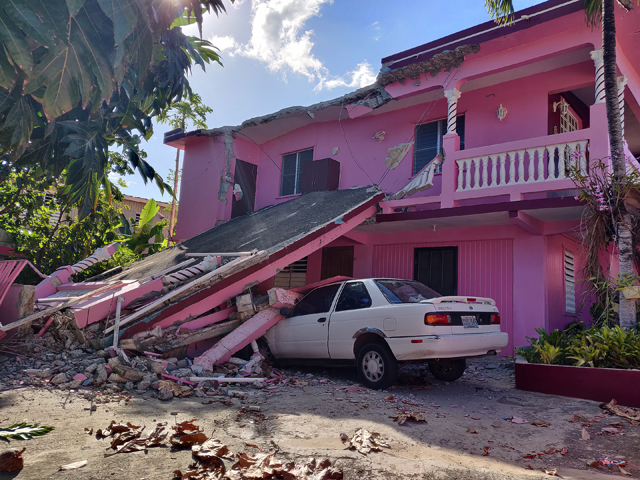18 April 2023–In the wake of the 2020-2021 Southwest Puerto Rico earthquake sequence, researchers asked emergency responders and residents in affected communities about the information they needed to prepare for the next earthquake.
Residents surveyed door to door and in focus groups said they wanted to know more about and have easier access to an aftershock forecast, along with information on potential tsunami risk, according to a presentation at the SSA 2023 Annual Meeting.
Residents also wanted more information tailored specifically to their local area, said Jenniffer M. Santos-Hernández of the University of Puerto Rico, Río Piedras, who led the research team.
Santos-Hernández said there is a perception among some emergency responders and seismologists “that sharing the probability of another earthquake can cause panic, but disaster research says that panic is a very rare occurrence.”
“This keeps [them] from disseminating aftershock forecasts,” she added, “but that’s precisely the information that people are seeking.”
One of the participants in the study said of a visualization of an aftershock forecast “that looking at this gives me peace,” Santos-Hernández noted.
The research also revealed than only 1%of those surveyed were aware of aftershock forecast products generated by the U.S. Geological Survey, “even though that was what they wanted to know,” she said.

Residents also wanted to have tsunami risk maps in the wake of earthquakes, “something possible through better interagency collaboration with the National Oceanic and Atmospheric Administration (NOAA)” Santos-Hernández noted.
The research team began work in 2020 to get local feedback on risk communication products produced by the USGS’ Earthquake Science Center and aftershock teams.
“We want to transition to a culture of preparedness, and they are the ones who can tell us more on how to do that because they’ve been doing it,” Santos-Hernández said of communities in the municipalities of Guayanilla, Guánica, and San Juan.
Santos-Hernández and her colleagues show prototype risk communication products to residents “so they can provide us feedback on what specific changes they want on these visualizations,” she said. This feedback helps USGS refine its communication products.
The researchers have learned more about how the people affected by the 2020-2021 earthquake sequence behaved during the earthquakes. For instance, many of those surveyed knew about the need to keep a flashlight on hand for emergencies, but they told the researchers they thought the advice should be to keep the flashlight close at hand by the bed.
Some of those surveyed said their plan was to evacuate a structure during an earthquake “but in community meetings, residents who were dealing directly with the earthquake, also said, ‘thank God I couldn’t move, because if I had tried to move, the staircase of my house collapsed,’” Santos-Hernández shared. “Contrasting the intentions with what people actually did is important to promote preparedness and overall safety.”
Too often residents in Southwest Puerto Rico are left out of earthquake resilience research and preparedness programs, she noted.
“What really was very eye-opening in the research was that their experience was dramatically different from that of other people [in Puerto Rico],” Santos-Hernández said. “Ultimately because we are not paying much attention to the area, we’re undermining earthquake risk. We are really losing the opportunity for learning, planning, and building capacity.”
The research has also highlighted the important role of scientists in risk communication, she said. “What we’re learning is that when the scientist engages in risk communication, people are actually listening, and they take actions based on what that scientist is saying.”
The survey showed “that people are more likely to do something if they learn about the possibility of a stronger earthquake from a scientist,” said Santos-Hernández.
In the case of the 2020-2021 earthquakes, she noted, some residents were more likely to structurally reinforce their homes and businesses after hearing about future earthquake risks from a scientist.
